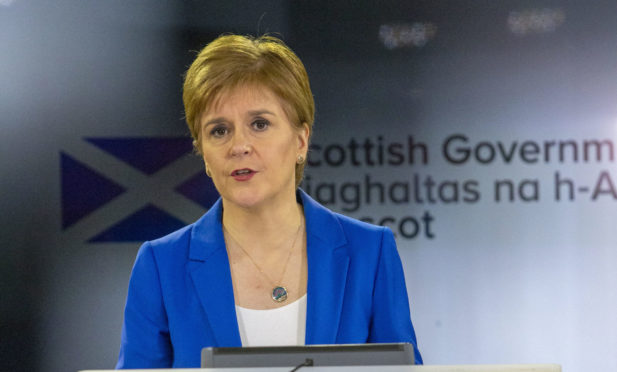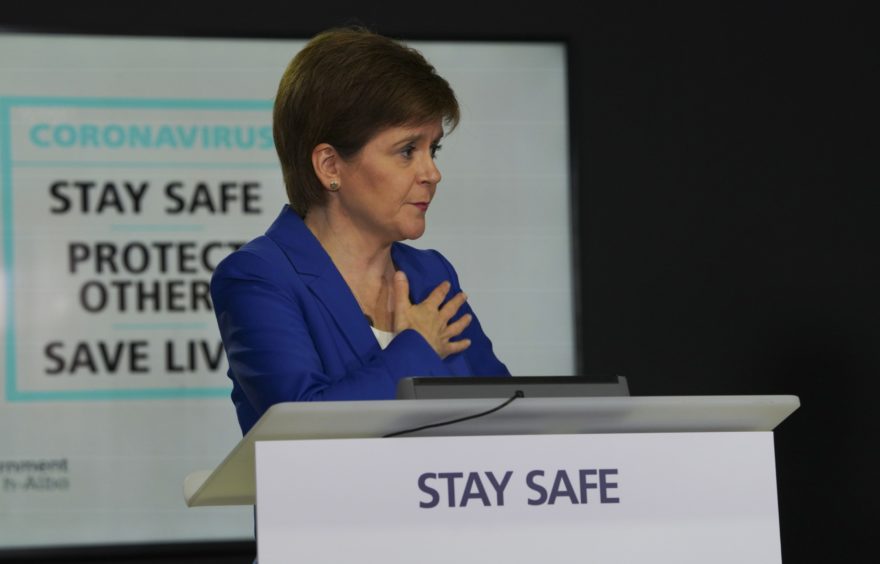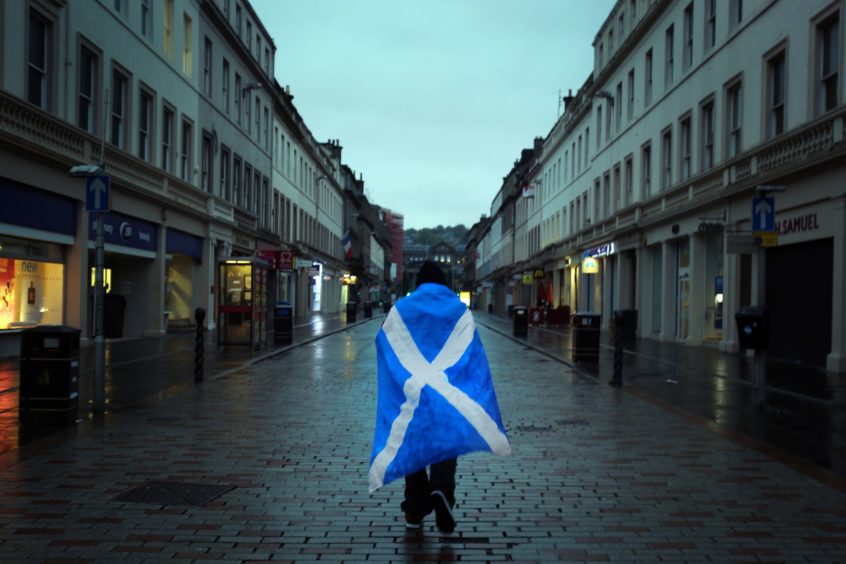Nicola Sturgeon has told the SNP to learn the “lesson” that support for independence rises when the party stops talking about the constitution and focuses fully on governing Scotland.
The first minister appeared to take a swipe at critics within the Yes movement who have been calling for her to act with more urgency to achieve independence.
Speaking to Andrew Marr on the BBC, Ms Sturgeon pointed to a recent poll showing support for independence had reached 54%, having risen by five percentage points.
She linked the rise to the Scottish Government’s handling of the coronavirus crisis, and suggested that her colleagues should continue to “show, not tell”.
The SNP leader said: “At the moment I am focused 100% on tackling Covid, and people can agree with that or not agree with it, but until we are out of this crisis that is going to continue to be the case.
“I think everybody knows that I want Scotland to be independent, but maybe the scenario that you have just outlined there has a lesson in it for my own party.
“You know, at no point during this have I weighed my decisions on a political basis or on a constitutional basis, but as you say, at a time when I and the SNP have not been talking about independence all the time, but getting on with the job of autonomous decision-making, and trying to take the right decisions to get the country through a crisis, support for independence appears to have increased.
“So maybe there is a bit of a lesson in there about show, not tell, but who knows.”
A Panelbase poll for The Sunday Times last week found that support for independence had jumped by five points to 54%, while backing for staying in the UK had fallen by five points to 46%.
Such a result in a second independence referendum would almost represent a reversal of the 2014 vote, which was 55% in favour staying in the Union and 45% for going it alone.
Professor Michael Keating, chair in Scottish politics at Aberdeen University and director of the Centre on Constitutional Change at Edinburgh University, said that the pandemic may have had a “ratchet effect” on support for independence, and that the crisis could prove to be a “critical moment”.
He said the poll had “confirmed the trend over the last year or so that independence has nudged above 50%”, which he said had “belatedly” followed the Brexit vote and had now been “reaffirmed” by the coronavirus crisis.


